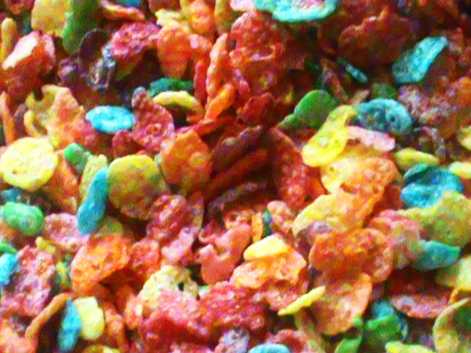Artificial flavors and colors are nothing new. For hundreds of years food makers have been putting additives into food, ranging from soft drinks to sausages. Just like graphic artists use photo-editing software to alter the reality of what we see, food scientists use artificial ingredients to change the reality of what we taste.
One of the most blatant examples of such alteration involves jelly beans. For instance, how can a tiny ball of sugar taste and even look like buttered popcorn? Jelly Belly makes it happen with a carefully crafted combination of natural and artificial ingredients that include carnauba wax and Yellow 5.
Carnauba wax, an organic compound that comes from the leaves of a palm grown in Brazil, is used to coat many candies to keep them from melting. It’s also found in a variety of household products including car wax. Yellow 5, also called tartrazine, is a widely used synthetic dye that can be found in everything from potato chips to pet food. Apparently the creative concoction works, given that buttered popcorn has become one of Jelly Belly’s most popular beans.
It’s one thing to eat some candy once in a while that contains artificial ingredients. It’s another thing to include additives as a regular part of one’s daily food intake, which takes us back to breakfast cereals. Many people eat cereal, even the same cereal, every day. Furthermore, many breakfast cereals contain artificial colors and flavors; although, that trend may be changing.
Last summer the world’s largest producer of breakfast cereal, Kellogg’s, promised to eliminate all artificial flavors and colors from its cereals and snack bars by the end of 2018. Its largest competitor, General Mills, willed one better. By the end of 2015, the company had already purged artificial colors and flavors from 75% of its cereals, and it had a plan to remove the remainder by the end of 2017.
Cereal makers aren’t the only ones deciding to go more natural. The Huffington Post reported that ten other prominent food companies have resolved to remove artificial colors and flavors by the end of 2018, or sooner. Joining Kellogg’s in that action are companies that include Chipotle, Subway, Taco Bell, Pizza Hut, and Kraft.
Some may be wondering whether these initiatives really matter. Are artificial flavors and colors truly things that should concern consumers, or do efforts to eliminate them represent little more than a positioning ploy—companies hoping to gain goodwill via perceptions that they are more socially conscious than their competitors?
There is evidence to suggest that concerns about artificial ingredients are justified. For instance, in 1906 the U.S. government began investigating the safety of 80 food dyes, and by 1938 only 15 synthetic colors remained that were considered safe enough to be legal. Fast forward to the present, and only seven dyes remain on the Food and Drug Administration’s (FDAs) approved list for use in the U.S. One of those dyes, Yellow 5, is illegal in much of Europe and “is currently undergoing further testing for links to hyperactivity, anxiety, migraines and cancer. You may recall from above that Yellow 5 is the same dye used to color Jelly Belly’s buttered popcorn beans.
Such findings are in keeping with those of researcher Ben Feingold, who in the 1970’s found a positive relationship between children’s consumption of artificial flavors and colors and hyperactivity. In addition, a 24-study meta-analysis conducted in 2012 found that artificial food additives tend to exacerbate symptoms of ADHD for many children. Furthermore, some food dyes have been associated with hypersensitivity in both children and adults.
So, artificial food flavors and colors may be detrimental to us physically and behaviorally, but as with many things in life, demand is king: Some companies won’t adapt their products unless they’re convinced that consumers really prefer those without additives. Well, consumer sentiment seems to be shifting in favor of natural, as “surveys find majorities of respondents saying that artificial chemical additives negatively influence their buying decisions.” More specifically, in its own research, Nestle USA, part of world’s largest food company, has found that people prefer candy without artificial flavors and colors. Those results have led the division to strike such ingredients from its chocolate confections.
Of course, consumers are also notoriously fickle. Sometimes we say we want something different, but then we don’t buy it. Kraft’s recent experience, however, suggests that consumers may truly be willing to change, at least if they don’t realize what’s happening. Last December the company discretely reformulated the recipe of its iconic Mac & Cheese, removing all artificial preservatives, flavors, and colors. In their place, the firm added “natural spices like paprika, annatto and turmeric.” The amazing thing is that almost no one noticed until Kraft revealed its revision, 50 million boxes and several months later.
The bottom line is that eliminating artificial colors and flavors from food seems to be in the best interest of both companies and consumers, enhancing stakeholder value and encouraging society values, such as stewardship and respect. Subtracting additives, therefore, equals another instance of “Mindful Marketing.”
Learn more about the Mindful Matrix and Mindful Meter.
Check out Mindful Marketing Ads and Vote your Mind!




 RSS Feed
RSS Feed